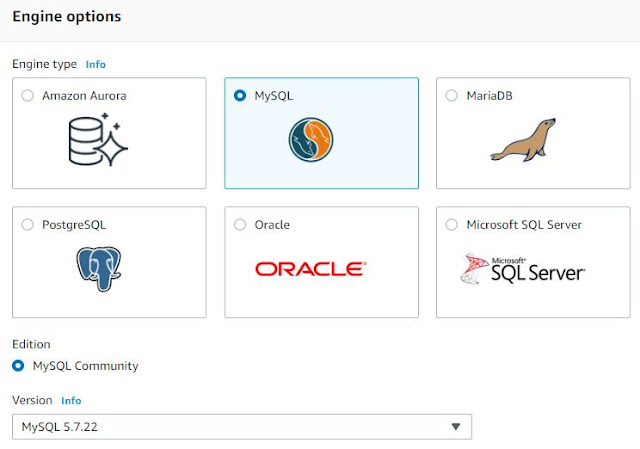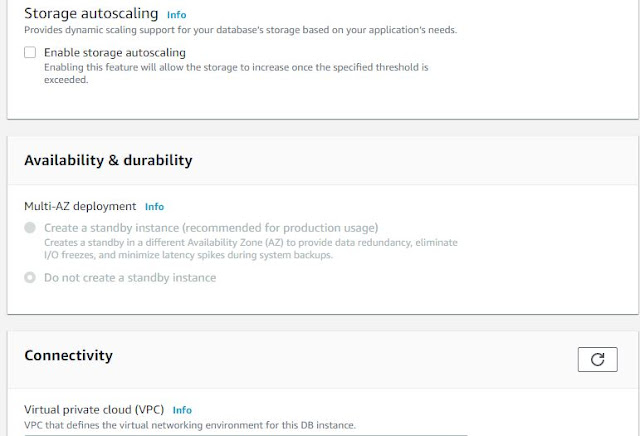I have been working on terraform for sometime now and find it very useful , We can create most of the cloud infrastructure using terraform including RDS-MYSQL instances.
Today i will be posting a simple code to create a MYSQL RDS instance with basic configuration for a beginner.
Create a main.tf file and add the below values in your testing environment. Am assuming AWS access keys are already present in the laptop that is connecting to the AWS environment for access , otherwise terraform will be unable to communicate with AWS.
-------------------------------------------------------
terraform {
required_providers {
aws = {
source = "hashicorp/aws"
version = "~> 3.27"
}}}
provider "aws" {
profile = "default"
region = "specify region"
}
resource "aws_db_parameter_group" "default" {
name = " testnew"
family = "mysql5.7"
}
resource "aws_db_instance" "default" {
identifier = "testdb"
allocated_storage = 10
engine = "mysql"
engine_version = "5.7"
instance_class = "db.t3.micro"
name = "mydb"
username = "testuser"
password = "Specify password"
parameter_group_name = "newpggroup"
}
once the above code is complete, run a terraform init, terraform plan to validate the plan and finally terraform apply..
Post this you should see an RDS instance created based on the inputs provided above
This is a very basic example for someone to start with terraform and we can provide many other parameters in the above code. Do refer to terraform documentation for the same











